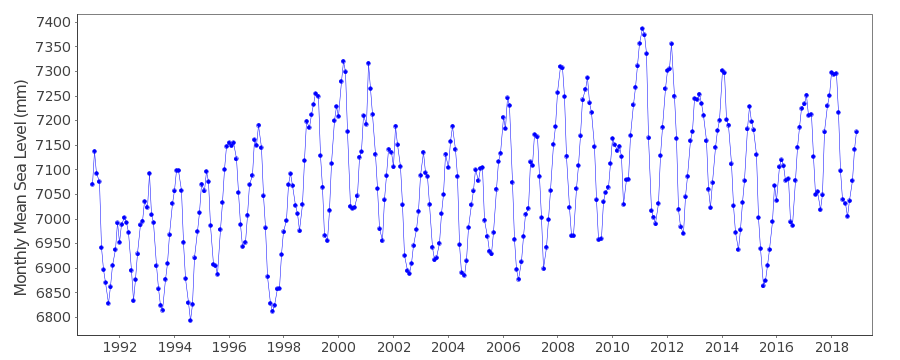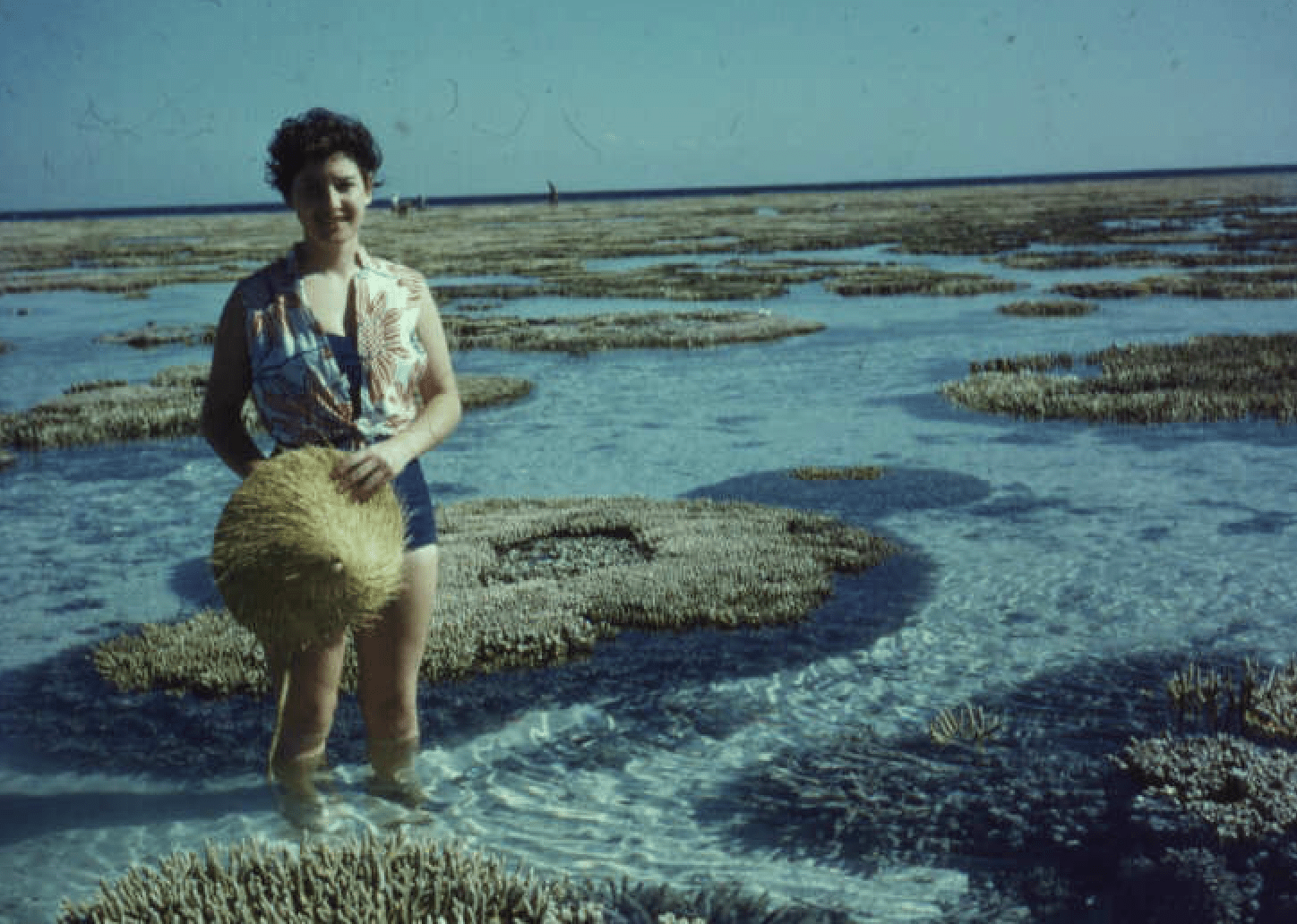I’VE been asked to speak this coming Sunday at the Maroochydore Surf Club (36 Alexander Parade, Sunshine Coast) about climate change at the Great Barrier Reef, and to provide both a local and global perspective.
It is sometimes said that “all politics is local”, but this is hardly the case with climate change: it has become such a political issue and usually the focus is global. This global focus, and particularly the focus on carbon dioxide as a driver of climate change, has confused understanding of some really basic phenomena — phenomena that are both predictable and natural.
It was entirely predictable that with the extreme El Niño of 2015/2016 there would be more coral bleaching than usual due to the falling sea levels, and perhaps also higher temperatures.
Yes, that is correct, falling sea levels.
If we consider mean monthly sea levels at Darwin (as recorded by the
Permanent Service for Mean Sea Level based in the UK) they were exceptionally low in 1997/1998 and then again in 2015/2016, as shown in Figure 1. There were falling sea levels across the western Pacific.
Indeed an El Niño is a climate cycle in the Pacific Ocean with a global impact on weather patterns that begins when warm water in the western tropical Pacific Ocean shifts eastward along the equator toward the coast of South America.

Corals usually grow-up to just below the lowest mean spring tide. Corals are particularly vulnerable to extremely low tides and in particular low tides in the middle of the day when there is also high solar radiation. The damage from such events may leave a characteristic tell-tale structure, for example, micro-atolls.
I have a picture of my mother (who migrated to Australia after WWII, see the picture featured at the top of this post) standing in front of a micro-atoll at Heron Island, where she worked as a waitress in the mid-1950s. I have another picture — I will show at the Maroochydore surf club on Sunday — showing the extent of the bleaching at Heron Island at that time.
This coral bleaching back in the 1950s, and much of the recent bleaching at the Great Barrier Reef, may have been due to falling sea levels, rather than extreme temperatures as I will explain on Sunday.
Of course, another determinant of sea level is the quantity of ice on Earth. This has varied significantly over geological time. Modern variations in ice and sea levels are negligible when compared with those from natural Ice Age cycles.
I will show some evidence of past cycles embedded in the local Sunshine Coast landscape, including when Maroochydore was underwater because of higher sea levels just 120,000 years ago.
Everyone is welcome at the Surf Club, but please book online. I will speak for about 1 hour … beginning at 2pm on Sunday 14th July on Level 3 which is the Conference Room, 36 Alexander Parade, Maroochydore. If you are coming please book online: https://www.trybooking.com/book/event?eid=520591
I hope to see you there.


 Jennifer Marohasy BSc PhD is a critical thinker with expertise in the scientific method.
Jennifer Marohasy BSc PhD is a critical thinker with expertise in the scientific method.

The Great Barrier Reef is believed to be about 25 million years old, based on geological ages of formations below the oldest coral remnants.
Over that period of time, the global sea level is shown to have varied from +30m to -100m compared to the level today.
What happened to the reef when the sea level rose 30m? It grew up to that sea level.
What happened when to global sea level fell 100m at the peak of the last ice age – only 14,000 years ago? The inner reef was left high and dry. But coral cant live out of the water, so it died off and the reef was eroded down to the sea level of the day.
The Eastern Australian coastline was much further out to the east at that time. Just look at where the 100m bathymetric contour is.
That also why the coral reefs in Western Australia are 200km offshore and sitting in 150m of water – they started to grow at that location in one of the several recent ice ages when sea levels were about 100m lower (each time).
In short, coral reefs around the world follow sea level up and down, over geological time (Reefs are dynamic).
Land surfaces also move up and down because of tectonic forces, but in Australia this is not significant compared to these major climatic sea level changes.
Thank you Jennifer. I appreciate what you do. Namaste!
I am a member at the club however live in New Zealand and unfortunately cannot attend your lecture. I would be very interested should you decide to publish the content wider.
Thanks, Jen.
I recently received this email via a friend from a hydrographic surveyor showing the latest readings at Fort Denison indicate an actual fall in sea levels there:
“The seas and oceans to the east of Australia forms the largest body of water on Earth. This broadly connected vast body of water presents a genuine sea level. The Sydney Fort Denison Recording Station provides stable, accurate and genuine mean sea level data. The following table shows mean sea levels at 10 year intervals and these levels are related to Chart Datum which is at the lowest spring tide level.”
100 YEARS OF MEAN SEA LEVELS AT FORT DENISON, SYDNEY:
1914 – 1.11 metres
1924 – 0.98 metres
1934 – 0.98 metres
1944 – 0.97 metres
1954 – 1.00 metres
1964 – 1.09 metres
1974 – 1.09 metres
1984 – 1.02 metres
1994 – 1.04 metres
2004 – 1.08 metres
2014 – 1.12 metres
2019 – 1.05 metres
Accordingly, the mean sea level at Sydney in 2019 is 6 centimetres lower than the mean sea level at Sydney in 1914 when the Bureau Of Meteorology commenced recording Mean Sea Level.
Have you seen this recent article, Jen?
https://www.cfact.org/2019/07/02/science-digest-gets-caught-pushing-a-coral-reef-myth/
“Although the Science Daily article strikes an overall alarmist tone, the article does acknowledge that “as the world’s climate changes, tropical temperatures shift towards the poles, enabling corals to grow in new places.”’
100km inland from the South East Coast in SA, there is a limestone quarry with literally thousands of fossils of sea creatures.
You can follow the road across from the Vic SA border to the coast and you will cross around 5-6 ranges of coastal sand dunes, left behind as the ocean retracted over the millennia.
NOTE TO ME FROM THE ORGANISERS, IF YOU ARE COMING ON SUNDAY:
It would be good to get people booking online to make sure room set up and catering is correct.
https://www.trybooking.com/book/event?eid=520591
This provides some interesting time correlations with work that I did in 1969 on the Offshore Beach Sands of Eastern Australia much further to the south.
“The Integrated Ocean Drilling Program (IODP) Expedition 325 drilled 34 holes across 17 sites in the Great Barrier Reef, Australia to recover fossil coral reef deposits. The main aim of the expedition was to understand the environmental changes that occurred during the last ice age and subsequent deglaciation, and more specifically (1) establish the course of sea-level change, (2) reconstruct the oceanographic conditions, and (3) determine the response of the reef to these changes. We recovered coral reef deposits from water depths down to 126 m that ranged in age from 9,000 years to older than 30,000 years ago. Given that the interval of the dated materials covers several paleoclimatologically important events, including the Last Glacial Maximum, we expect that ongoing scientific analyses will fulfill the objectives of the expedition.”
Source – IODP Expedition 325: Great Barrier Reefs Reveals Past Sea-Level, Climate and Environmental Changes Since the Last Ice Age
doi:10.2204/iodp.sd.12.04.2011
32 Scientific Drilling, No. 12, September 2011
by Yusuke Yokoyama, Jody M. Webster, Carol Cotterill, Juan Carlos Braga, Luigi Jovane, Heath Mills, Sally Morgan, Atsushi Suzuki,
and the IODP Expedition 325 Scientists
Hi I’m in Cape Town SA and shared this article. A local guy commented “cooked readings. Worked for government in Australia and know the area.”
Do u know if B.O.M’s data sets are reliable, audited even?
This is a great topic. I firmly believe that what you say is so true and backed up with evidence. Why so many news outlets and Governments keep blaming this phenomenon on climate change. It is a great money maker and ( organization by disorganization ) for Governments.
Sorry that I can’t make the meeting but I live in Ontario Canada.
Keep up the good work of informing the ones that don’t have tunnel vision.
Don Rochon